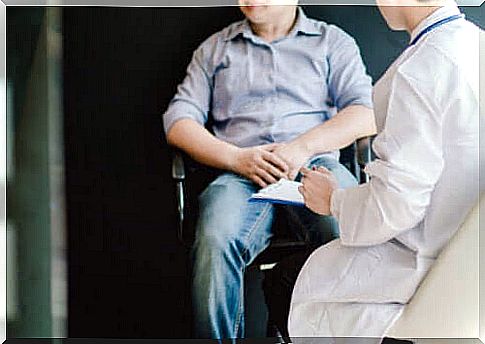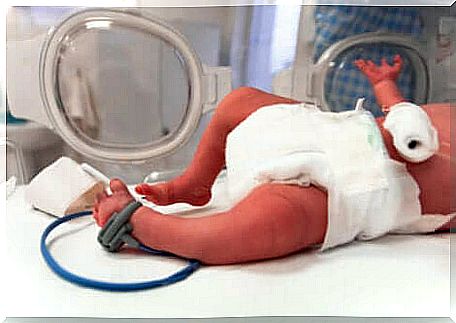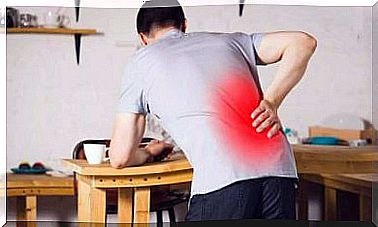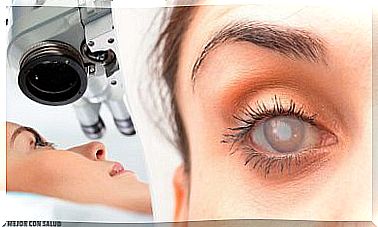What Is Cryptorchidism Or Testicles That Have Not Descended?

Cryptorchidism is a disorder characterized by incomplete descent of one or both of the testes through the inguinal canal into the scrotum. According to expert sources, we speak of this pathology when the testicle is permanently absent from the scrotum at six months of age or older.
The prevalence of this condition, that is, the number of affected patients in a given population, is estimated at 3% to 5% in full-term newborns. This value can increase by up to 30% in premature babies. Do you want to know more about cryptorchidism and its characteristics? So, keep reading.
Why do the testicles not descend correctly?
As indicated by professional portals such as the Mayo Clinic , the causes of cryptorchidism are still not entirely clear. The etiology of the disease is attributed both to environmental factors (maternal and fetal conditions and exposure to chemical agents) and to genetic factors and syndromes that present with malformations.
Cryptorchidism is distributed as follows in babies around the world:
- 3% to 5% of children born at term have cryptorchidism.
- Up to 45% of premature babies come into the world with undescended testicles.
- At three months of age, this figure drops to 1% or 2%.
- Only 1% of children have cryptorchidism by the age of one.
In addition to all these data, it is interesting to know that 10% of patients have both testicles without descending, that is, most clinical conditions are unilateral. In any case, we are facing a pathology linked to children who are born before their time.

Who is affected by cryptorchidism?
This pathology is related to the time and condition of birth. The risk groups prone to cryptorchidism are as follows:
- Children with low birth weight, that is, with less than 2500 grams of body mass.
- Premature birth.
- Family history of cryptorchidism or other testicular problems.
- Fetal conditions during pregnancy that can impede development.
- Use of alcohol, tobacco or exposure to certain chemicals by the mother during pregnancy.
Symptoms and possible complications
The only obvious symptom is the absence of one or both testicles in the scrotum. In 80% of cases the invisible testicles are palpable, while in the remaining 20% they are so retracted that they cannot be touched. Even so, it should be noted that most are transitory and resolve after six months of life.
Unfortunately, as the US National Library of Medicine indicates, testicles that have not descended are more likely to develop cancer. Also, an incorrect sperm temperature (due to their proximity to the body) can translate to fertility problems.
cryptorchidism treatment
The goal of intervention in patients with cryptorchidism is to lower the testicle, which did not descend naturally, into the scrotum. According to sources already cited, there are different ways to solve the pathology. Among them, we find the following:
- Hormone treatment : B-HCG or testosterone injections can cause the baby to descent.
- Testicular prostheses and saline solutions : ideal for cases where the patient totally loses one or both of his testicles.
- Surgery : we’ll talk more deeply about this method below.
Surgical procedure and risks
The surgical procedure that aims to lower the testicles into the scrotum is called orchidopexy . The surgeon will carefully place the testicle in place and sew it up, securing it. According to Stanford Children Health , this operation has a 98% chance of success.
Among the possible risks, we find the following:
- Damage to spermatic vessels and testicular atrophy.
- Bleeding during surgery, post-operative or both.
- Appearance of an inguinal hernia.
- Bacterial infection due to the procedure.
- Opening the wound during recovery, which will require a second intervention.
Recovery
The patient must remain at rest for 2 to 3 days after the intervention and abstain from physical exercise for at least one month to protect the sutures. In addition, after removing the dressing, the process of cleaning the surgical incision area must be performed twice a day.
This is necessary to prevent infections. The applied stitches fall by themselves, it is not necessary to go to the doctor to remove them.

cryptorchidism has a solution
The fact that a child is born with one or both testicles without descending is generally not a cause for concern, as up to 99% of cases resolve spontaneously in less than a year. Still, in patients who do not recover, hormonal treatment and surgery are safe and excellent options.
Cryptorchidism has a solution in almost all cases, although surgery is sometimes necessary. So if you’re a parent and you see that your child has a testicle that didn’t come down, don’t worry; this will almost certainly not affect your lifestyle and it can develop normally after proper treatment.









